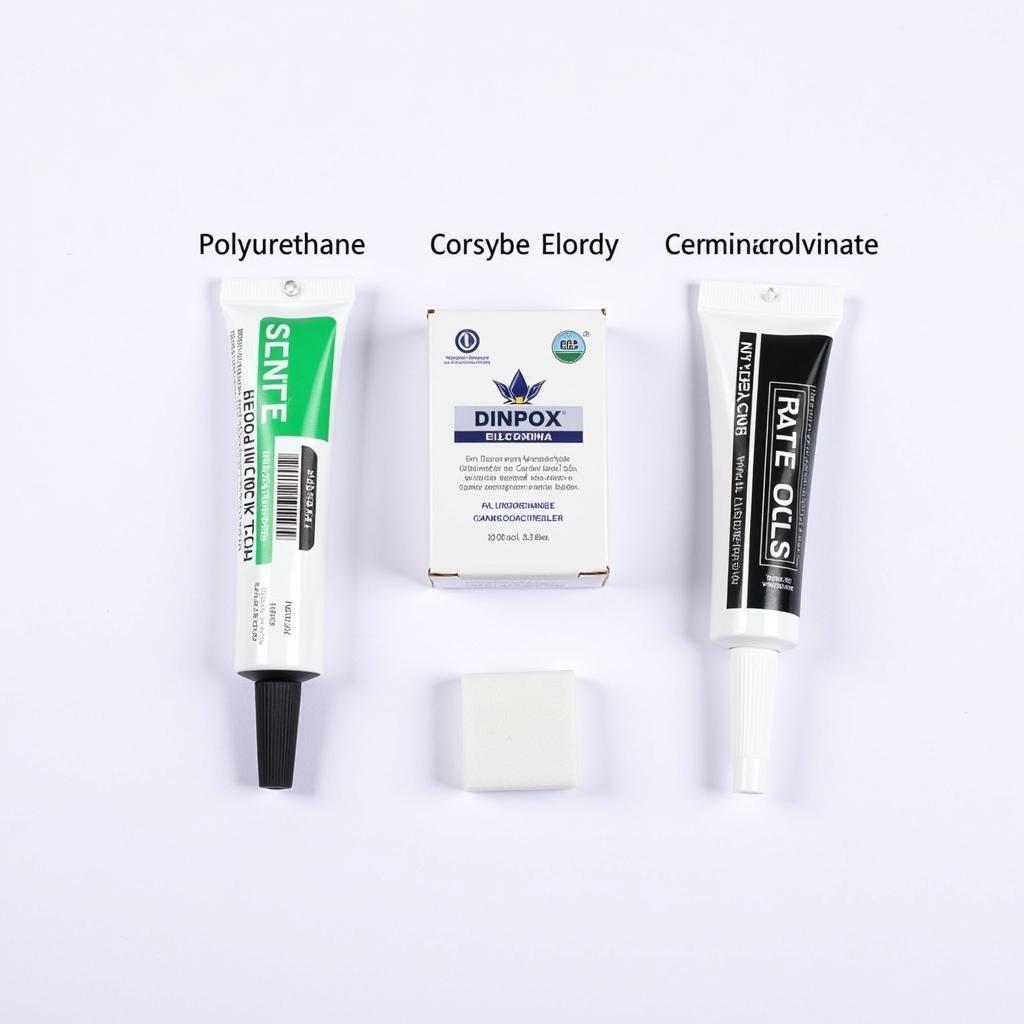Adhesive for car bumper repair is a crucial element in restoring your vehicle’s appearance and structural integrity after minor collisions or damage. Choosing the right adhesive and applying it correctly can mean the difference between a seamless repair and a noticeable blemish. This guide will delve into the world of car bumper adhesives, exploring the various types, application techniques, and best practices for achieving professional-looking results.
Types of Adhesive for Car Bumper Repair
There are several types of adhesive available for car bumper repair, each formulated for specific materials and damage types. Understanding the differences between these adhesives will help you select the best option for your specific needs.
Polyurethane Adhesives
Polyurethane adhesives are popular for their strong bonding capabilities and flexibility. They are suitable for repairing various plastics commonly used in bumpers, such as polypropylene and thermoplastic olefin (TPO). These adhesives are also resistant to moisture and temperature fluctuations, ensuring a long-lasting repair.
Epoxy Adhesives
Epoxy adhesives offer excellent adhesion and are known for their strength and durability. They are particularly effective for repairing rigid plastics and filling larger gaps or cracks. However, epoxy adhesives can be more brittle than polyurethane adhesives and may not be suitable for flexible bumper sections.
Cyanoacrylate Adhesives (Super Glue)
Cyanoacrylate adhesives, commonly known as super glue, are best suited for small cracks and minor repairs. They bond quickly and provide a strong initial hold. However, super glue is not as flexible or durable as polyurethane or epoxy adhesives and is not recommended for larger repairs or areas subjected to significant stress.
 Various Types of Car Bumper Repair Adhesives
Various Types of Car Bumper Repair Adhesives
Choosing the Right Adhesive
Selecting the appropriate adhesive is essential for a successful bumper repair. Consider the following factors when making your decision:
- Bumper Material: Identify the type of plastic your bumper is made of (usually marked on the underside).
- Damage Severity: Small cracks require different adhesives than larger breaks or deep gouges.
- Flexibility: Consider the flexibility of the repair area. A rigid section may benefit from epoxy, while a flexible area needs polyurethane.
- Environmental Factors: Choose an adhesive that can withstand temperature extremes and moisture.
Preparing the Bumper for Repair
Proper surface preparation is critical for ensuring a strong and lasting bond. car bumper repair adhesive won’t adhere well to a dirty or oily surface. Clean the damaged area thoroughly with soap and water, followed by a degreaser or isopropyl alcohol. Sand the area lightly to create a rough surface for better adhesion.
Applying the Adhesive
Follow the manufacturer’s instructions carefully when applying the adhesive. Use gloves and work in a well-ventilated area. Apply the adhesive evenly to both surfaces being bonded and clamp them together firmly. Allow the adhesive to cure completely according to the manufacturer’s recommended time. where to get car bumper repair near me can be found online.
Finishing the Repair
Once the adhesive has cured, sand the repaired area smooth and blend it with the surrounding bumper surface. Apply primer and paint to match the original bumper color for a seamless finish. how to repair dented car bumper can be a complex process so be sure to follow the correct procedure.
Conclusion
Choosing the right adhesive for car bumper repair is crucial for a successful and long-lasting fix. By understanding the different types of adhesives, preparing the surface properly, and following the correct application techniques, you can restore your bumper to its former glory with adhesive for car bumper repair. car bumper repairs georgetown offers professional services for those who don’t wish to undertake DIY repair projects.
FAQ
-
What is the strongest adhesive for car bumper repair?
Epoxy adhesives generally offer the strongest bond for rigid plastics. -
Can I use super glue for bumper repair?
Super glue is suitable for small cracks and minor repairs, but not for larger damage. -
How long does it take for bumper adhesive to dry?
Drying times vary depending on the adhesive type, but generally range from a few minutes to several hours. -
How do I prepare the bumper for adhesive application?
Clean the area thoroughly with soap and water, degrease, and lightly sand the surface. -
Can I repair a plastic bumper myself?
Yes, minor bumper repairs can be done DIY with the right tools and materials. For more complex repairs it’s always best to consult a professional. car bumper repair specialist in buckinghamshire can assist you with major damage. -
How can I find a professional to repair my bumper? You can find local repair shops by searching online for “car bumper repair near me”.
-
What are common causes of bumper damage? Minor collisions, parking lot bumps, and debris impact are common causes.
For assistance, contact us via WhatsApp: +1(641)206-8880 or Email: [email protected]. We offer 24/7 customer support.
